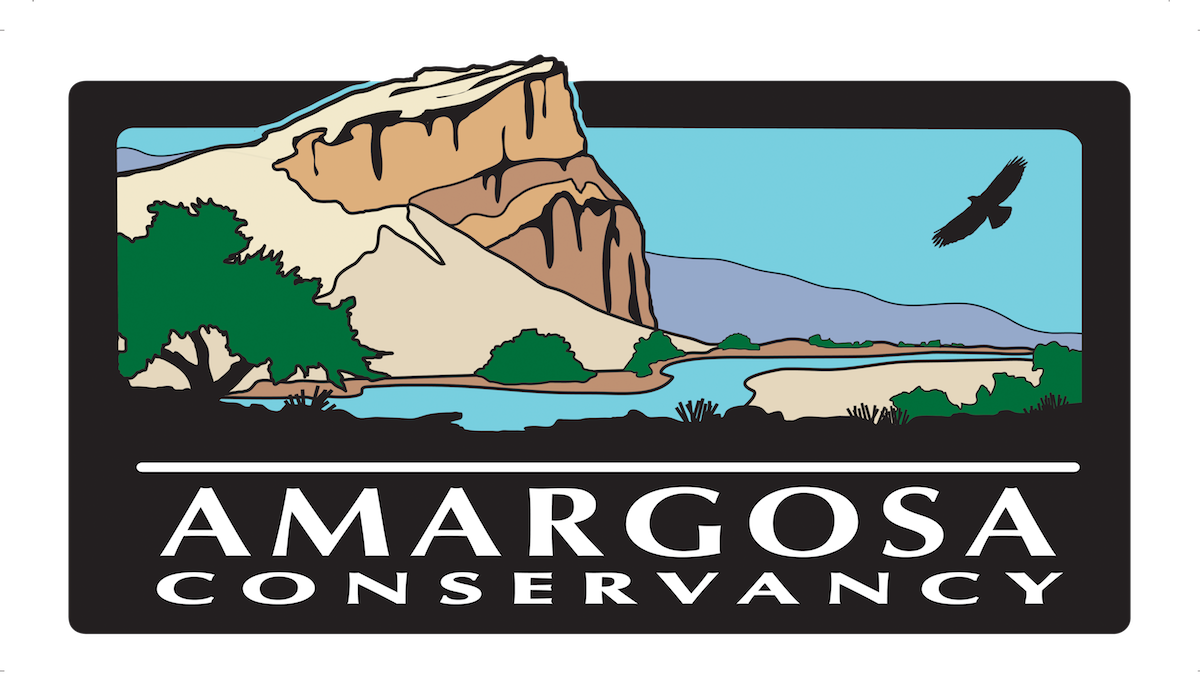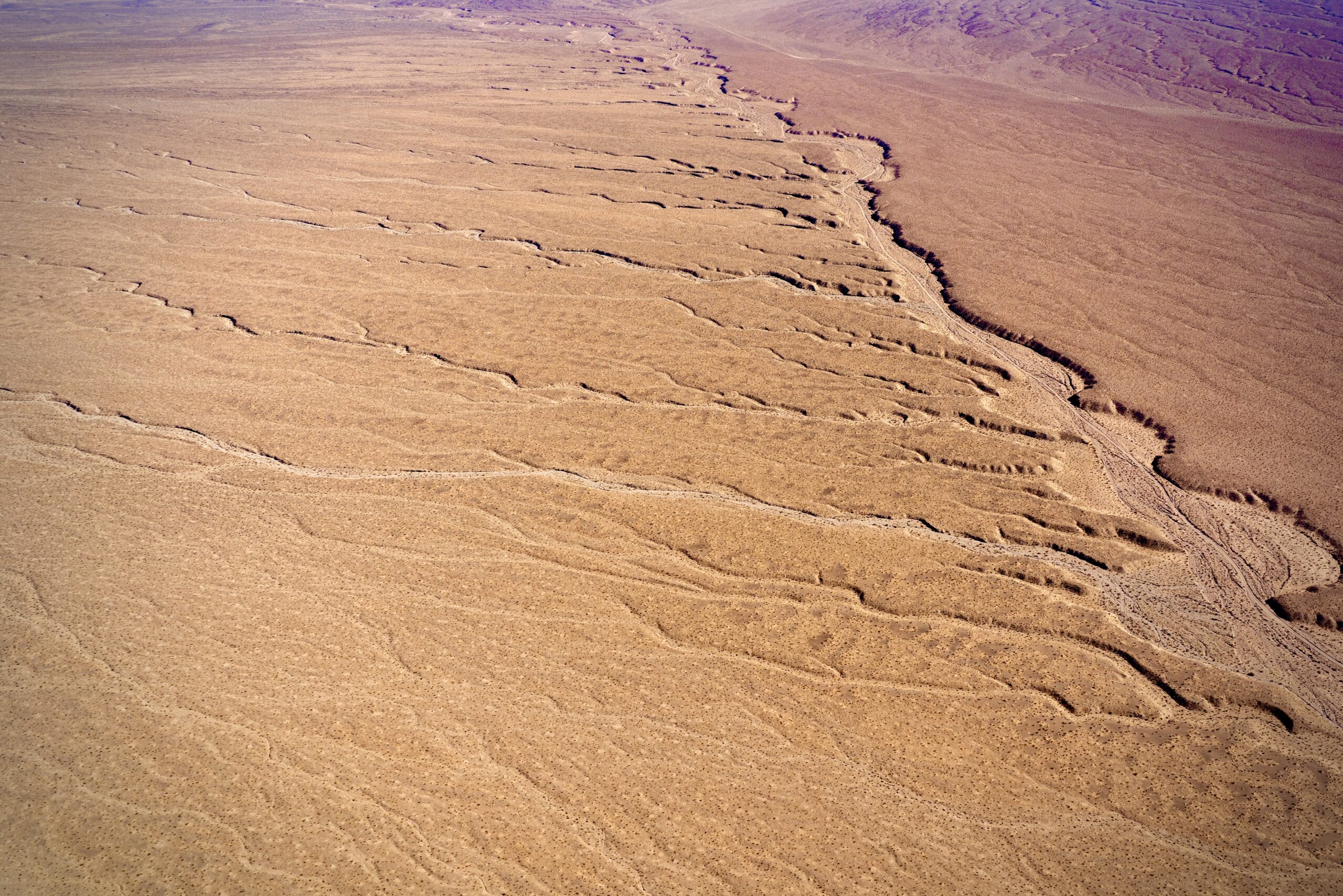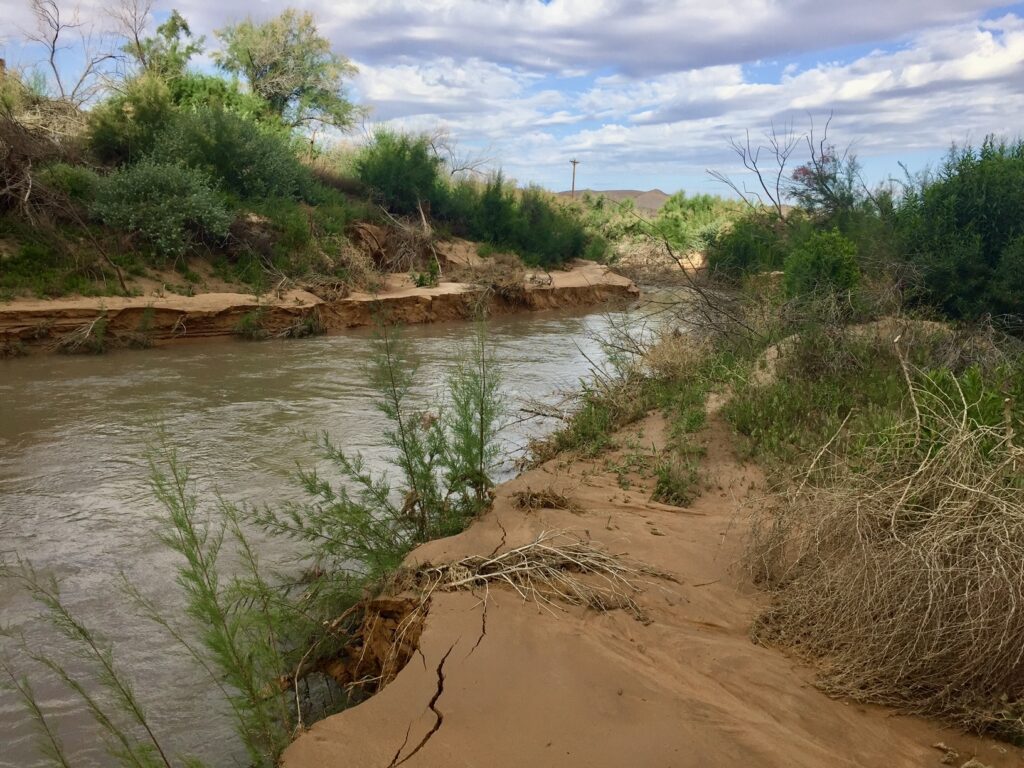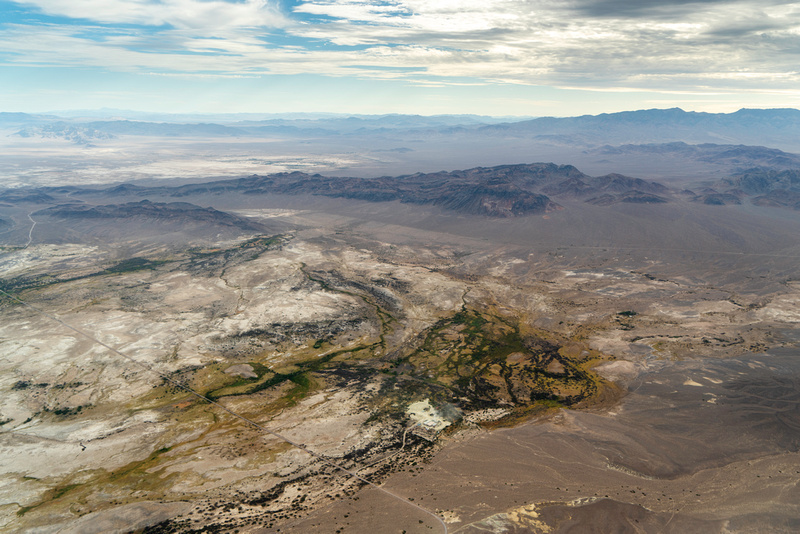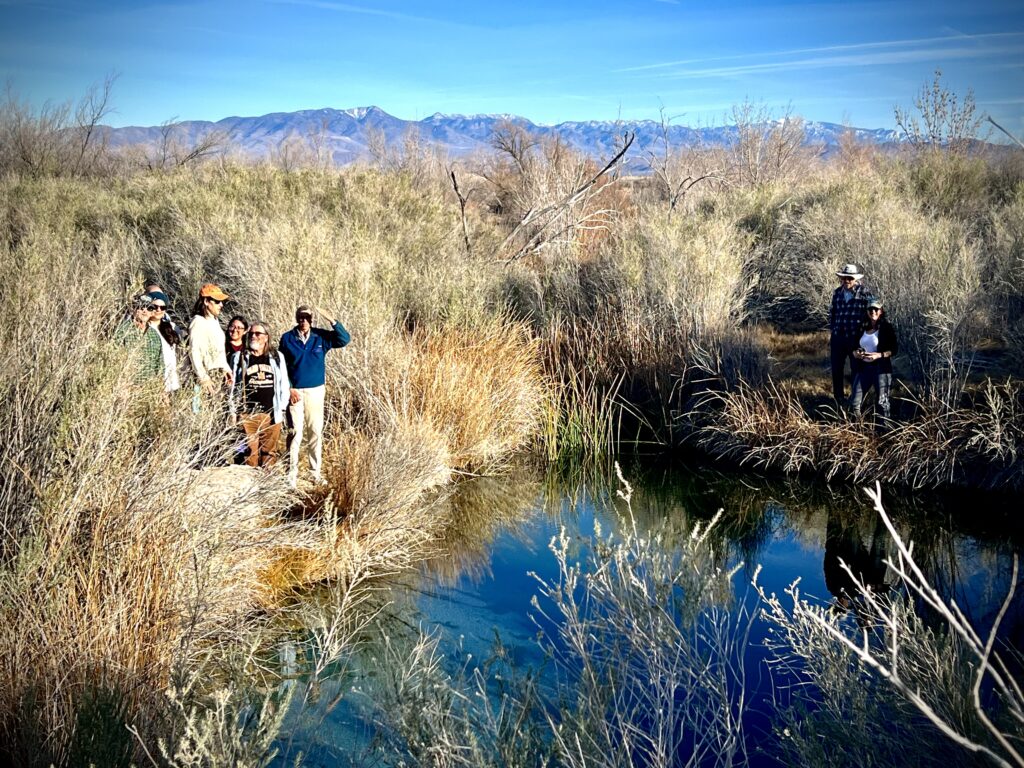Special report from Patrick Donnelly Amargosa Conservancy Vice-President Great Basin director, Center for Biological Diversity
A new era of Nevada groundwater management has begun. Here’s what it could mean for the Amargosa River.
The Nevada Supreme Court ruled in Sullivan v. Lincoln County last week, and they set off an earthquake that shook Nevada water law to its core. How to manage interconnected sources of water, and whether the Nevada State Engineer even has authority to do so, have been definitional questions in Nevada water law for over a decade. The Supreme Court gave a definitive, unquestionable answer: the state of Nevada has the authority to manage interconnected sources of water as a single source in order to protect senior water rights and wildlife. Period.
In many ways, Nevada water law can now be thought of as Pre-Adam Sullivan (the current Nevada State Engineer), and Post-Adam Sullivan. Pre-Sullivan, nearly every fight involving groundwater centered around legal questions as to the interconnectedness of ground and surface water resources, and to the State Engineer’s authority to manage such resources conjunctively. Now, the question of the State Engineer’s authority has been definitively settled. In a Post-Sullivan world, conjunctive management is the law of the land. Now we can stop arguing about whether we should act to stop groundwater overappropriation, or whether obviously interconnected sources of water can be managed as a single resource. We can finally start moving forward with how we should act to resolve conflict between water users and with environmental values including wildlife.
Background
The case in question is called the Lower White River Flow System (LWRFS) and primarily affects a seven-basin aquifer system in southern Lincoln County and eastern Clark County. The impetus for the case is Coyote Springs, a proposed city of 250,000 people in the desert sixty miles northeast of Las Vegas. In order to be viable, Coyote Springs’ developers need water, and lots of it. While at one time they planned on siphoning water off of the ill-fated Las Vegas pipeline proposal, now they are totally reliant on applications they’ve made for groundwater pumping for their proposed city’s future.
However, the groundwater they’re trying to access is already spoken for. Coyote Springs Valley is part of an series of hydrographic basins which are perched atop an interconnected carbonate groundwater aquifer, which is now referred to as the LWRFS. Down-gradient from Coyote Springs Valley in the LWRFS is the Muddy River, a spring-fed and short river which flows from its headwaters at springs in Moapa Valley through the communities of Logandale and Overton before spilling out into the Colorado River at Lake Mead. The Muddy River supports numerous endemic biota including the Moapa dace (Moapa coriacea), which is federally listed as endangered. The Muddy River, as it reaches Lake Mead, also comprises part of Las Vegas’s water supply, because the Southern Nevada Water Authority holds rights on the Muddy and gets Intentionally Created Surplus (ICS) credits, which they store in the Lake.
It was long suspected that the LWRFS was composed of a single aquifer system, but in order to obtain further data to justify decision-making about Coyote Springs’ water rights applications, the State Engineer issued Order 1169, requiring Coyote Springs conduct a pump test, to determine the impacts to the groundwater system of their proposed pumping over a two-year period. In just a few months, the impacts from the pump test were severe, and the springs began declining. The State Engineer ended the pump test early.
The evidence from the pump test was evaluated in an evidentiary hearing pursuant to Order 1303 in autumn of 2019. Then in 2020, the State Engineer issued Order 1309, designating the seven basins as the Lower White River Flow System, a superbasin where water would be managed as a single hydrographic unit. The State Engineer also determined a maximum sustainable groundwater pumping amount which would be instated to protect Muddy River flows and the Moapa dace. Finally, the State Engineer explicitly stated that they were relying on the best available science to render these decisions, which sounds like an obvious statement but actually had a significant amount of legal intrigue associated with it.
Muddy River near Glendale, NV; photo from USGS
The Litigation
Everybody sued over Order 1309. Coyote Springs sued, of course. The agricultural water users downstream in Moapa Valley sued. The methane gas power plant owners sued. The landfill sued. The gypsum mine sued. The Southern Nevada Water Authority sued, claiming there was still too much pumping. And the Center for Biological Diversity also sued, agreeing with SNWA that too much pumping would continue under the proposed cap.
District court briefing and arguments was a sort of tortured affair. With so many parties (up to 17 parties in the litigation, depending on how you’re counting), with dozens of volumes of testimony and evidence from the Order 1303 hearings, with nearly all of the power players in Nevada water politics involved, this was truly one of the more complicated pieces of water rights litigation in the history of the state.
District court briefing and arguments was a sort of tortured affair. With so many parties (up to 17 parties in the litigation, depending on how you’re counting), with dozens of volumes of testimony and evidence from the Order 1303 hearings, with nearly all of the power players in Nevada water politics involved, this was truly one of the more complicated pieces of water rights litigation in the history of the state. Unfortunately, District Court Judge Bita Yeager was swayed by our opposition, and she overturned Order 1309. Her ruling not only would have given Coyote Springs the water they need to move forward, it would have upturned Nevada water law and put the State Engineer decades behind in trying to manage interconnected sources of water in an increasingly arid world.
So we had no choice but to appeal to the Nevada Supreme Court. As did just about everyone else. What was different for us on appeal, however, is that this time we were siding with the State Engineer in defending Order 1309. While we still have some concerns about the overall pumping limit, our chief principle at the Supreme Court was to defend the Order 1309 precedent, which affects not just Coyote Springs and the Moapa dace but every significant water rights case we would ever bring in the state of Nevada. Order 1309 was groundbreaking in many ways – letting it die would be a huge victory for water developers and speculators and the real estate industry and mining.
The Ruling
The short story is: We won. About six months after oral arguments, the Nevada Supreme Court issued a unanimous ruling and we won on nearly every point we argued. In an unusual approach, the Court made many very definitive statements about Nevada water law, leaving no ambiguities and no room for questioning.
The Supreme Court overturned the District Court and upheld Order 1309. Their major findings which will ripple across Nevada water law for decades to come:
- The State Engineer may “conjunctively” manage surface and groundwater as a single resource. No further ambiguities about this.
- The State Engineer’s authority to manage surface and groundwater as a single resource is implied by his clear statutory duties to protect senior water rights and wildlife.
- Hydrographic basins established in the 1960s with a limited knowledge of Nevada’s structural hydrogeology are not immutable but in fact must be revised and delineated based on our current best knowledge of the interconnectivity of aquifers.
- The best available science must guide the state engineer’s decision-making.
- The state engineer must manage future water appropriations to protect values that are in the public interest, including wildlife.
For about a century, people have been pumping groundwater as if it were a totally discrete resource from nearby surface water. All across the state, surface water resources have been impacted by groundwater pumping. Whether this is valley-bottom springs going dry adjacent to center pivots or mine dewatering; whether it’s declines in creek and river flow after pumping for residential sprawl; whether it’s a whole river system collapsing under the weight of massive overappropriation of groundwater…This conflict is totally pervasive, affecting everybody.
So this ruling will therefore influence practically everything the State Engineer does. Every water rights dispute or case that involves groundwater pumping in basins with surface water rights. It will prove significant for wildlife and environmental advocates, who will invoke the precedent in urging the State Engineer to act to protect ecosystems, and in defending the State Engineer in court when he does act. It will prove significant for senior water rights holders on surface springs, creeks, and rivers, who will now be able to potentially pursue conflict determinations with nearby groundwater pumpers, even if those pumpers are located in a different valley. It will prove significant for community water supplies, mining companies, real estate developers, irrigators, Tribes, the whole universe of the Nevada water world.
Ash Meadows from above: Ecoflight, 2023
What About the Amargosa?
The Sullivan precedent could have significant implications on the future of water management in the Amargosa River watershed.
The Amargosa River is the poster child for the complex interactions between surface and groundwater. Literally all of our surface water starts as groundwater. And, given that this is the hottest, driest place in North America, we have very limited annual recharge within the watershed, outside of snowmelt from Mount Charleston flowing down to Pahrump. So if all surface water starts as groundwater, and the existing groundwater is basically all we will ever have, then every acre-foot of water that you pump out of the ground is one less acre-foot that’s available for surface water ecosystems. Now that’s a gross oversimplification of things, but the point remains: groundwater pumping in the Amargosa watershed removes water from aquifer storage which normally contributes to the baseflow of the River and its tributary springs.
And we have significant pumping here. The Ponderosa Dairy in Amargosa Valley, and the alfalfa fields associated with feeding the cows, consume about 15,000 acre-feet of water per year. Pumpers in Pahrump for alfalfa, other crops, municipal, and industrial use consume about 15,000 acre-feet per year. Then there are an additional 11,500 domestic wells in Pahrump, each entitled to pump 2 acre-feet per year. So in total there’s at least 35,000 acre-feet of water coming out of the aquifers of the Amargosa River watershed, and it could be as much as almost 50,000 acre-feet depending on how much groundwater people are pumping those domestic wells.
We know this pumping is already having impacts on the ecosystem. Springs in the Middle Amargosa, near Shoshone and Tecopa, have already dried up. Monitoring wells are showing downward trends. The DV3 model, a USGS groundwater model for the area, shows widespread aquifer declines in coming decades if status quo pumping continues. While some of these declines may just be a few inches or a few feet, when we’re talking about endangered species habitat that is often composed of no more than a thimbleful of water, a few inches of drawdown is the difference between life and death for a pupfish!
So we know the problem exists here. The question is how Sullivan might help us fix those problems. And that gets to a great ambiguity in Nevada water law. Sullivan clearly helps us push back against new appropriations – new requests for water. For mining. For Rover Metals, for instance. Or for other new uses. Clearly, Sullivan gives us tools, especially in the case of potential conflicts with wildlife, to stop new destructive water uses.
However all of the problems I just described come from existing pumping. We are already in a crisis even if there’s never a new mine or well or alfalfa field in the watershed ever again. And, it’s likely Sullivan alone doesn’t get us to a point where we can start dealing with the mistakes of the past, at least when it comes to wildlife.
But in the meantime, what it definitely does is gives us powerful new tools to stop new appropriations of water. Or applications to change the manner or place of use of water which cause negative impacts to wildlife. And we fully intend to use those tools to the fullest of our abilities to defend our beloved Amargosa River. Stay tuned.
Amargosa Conservancy Board of Directors, near Fairbanks Spring, 2024
